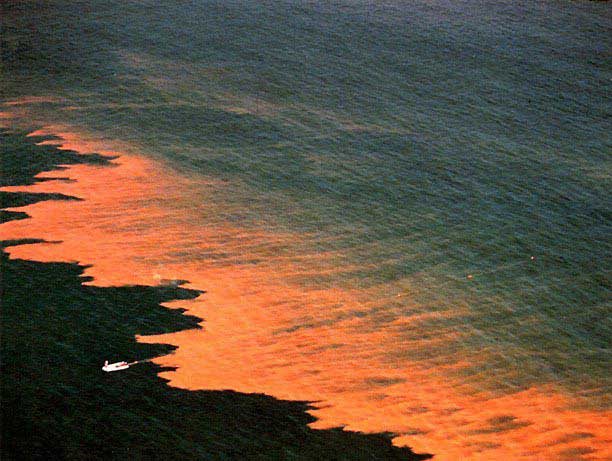Thursday, January 27, 2011
January 27, 2011 : Algae Blooms
Algae Blooms
An algal bloom is a rapid increase or accumulation in the population of algae in an aquatic system. Algal blooms may occur in freshwater as well as marine environments. Typically, only one or a small number of phytoplankton species are involved, and some blooms may be recognized by discoloration of the water resulting from the high density of pigmented cells. Although there is no officially recognized threshold level, algae can be considered to be blooming at concentrations of hundreds to thousands of cells per milliliter, depending on the severity. Algal bloom concentrations may reach millions of cells per milliliter. Algal blooms are often green, but they can also be other colors such as yellow-brown or red, depending on the species of algae.
Bright green blooms are a result of blue-green algae, which are actually bacteria (cyanobacteria). Blooms may also consist of macroalgal, not phytoplankton, species. These blooms are recognizable by large blades of algae that may wash up onto the shoreline.
Of particular note are harmful algal blooms (HABs), which are algal bloom events involving toxic or otherwise harmful phytoplankton such as dinoflagellates of the genus Alexandrium and Karenia. Such blooms often take on a red or brown hue and are known colloquially as red tides.
In the marine environment, single-celled, microscopic, plant-like organisms naturally occur in the well-lit surface layer of any body of water. These organisms, referred to as phytoplankton or microalgae, form the base of the food web upon which nearly all other marine organisms depend. Of the 5000+ species of marine phytoplankton that exist worldwide, about 2% are known to be harmful or toxic. Blooms of harmful algae can have large and varied impacts on marine ecosystems, depending on the species involved, the environment where they are found, and the mechanism by which they exert negative effects.
Harmful algal blooms have been observed to cause adverse effects to varying species of marine mammals and sea turtles, with each presenting specific toxicity-induced reductions in developmental, immunological, neurological, and reproductive capacities. A mass mortality event of 107 bottlenose dolphins occurred along the Florida panhandle in the spring of 2004 due to ingestion of contaminated menhaden with high levels of brevetoxin. Manatee mortalities have also been attributed to brevetoxin but unlike dolphins, the main toxin vector was endemic seagrass species (Thalassia testudinum) in which high concentrations of brevetoxins were detected and subsequently found as a main component of the stomach contents of manatees.
Related Articles : Dead Zones
Subscribe to:
Post Comments (Atom)


No comments:
Post a Comment